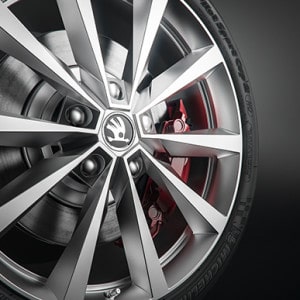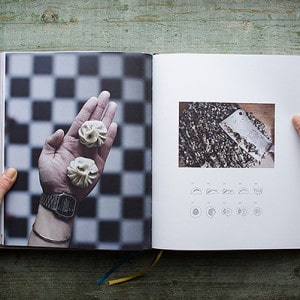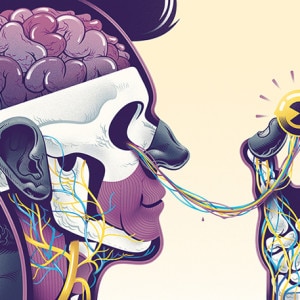I was asked recently what were my own 10 rules for design. This isn’t an easy question to answer as I feel there are a lot more than 10 rules that I use and I honestly don’t know that there are as many as 10 really important ones. But with those caveats, here’s my best attempt at writing my personal 10 design rules:
1. Start with a really good idea.
Polishing a turd will only go so far.
My former Art Director used to tell me that it takes 100 bad ideas to come up with one good idea. This isn’t true every time, but it’s a good rule of thumb. Come up with a lot of ideas, do a lot of sketches and a lot of rough designs.
Don’t fall in love with a design to the detriment of your client or your audience. Be willing to throw ideas and designs away. This is the first lesson to learn when you begin as a designer—you will do a LOT of designs that will end up in the trash.
If I ever get into a rut with a client, making endless small corrections to try to get the client happy, I usually step back and look at the idea itself. If no execution will make it work, then it’s time to come up with a new idea.
2. The weaker your idea, the better your execution has to be.
Conversely, the stronger your idea, the more you can get away with on the execution. This applies to a lot of creative fields. The reason Helvetica is such a great font is because it’s masterfully executed. Every stroke is precise, every curve meaningful. Compare that to a font like Olicana—a unique typeface that created a large library of glyphs of different character combinations to get a truly handwritten look. Helvetica is carried by the execution while Oilcan thrives on it’s novelty.
Another great example is the Google logo compared to the Twitter logo. The Google logo was a really weak idea and has been upgraded only in execution—getting progressively better designed with each iteration. While Twitter has also upgraded it’s logo, the original idea was strong enough that even with weak execution it was a great logo.
3. Start with a good template.
A template is the equivalent to a building’s foundation—don’t start building without one.
Trim size, margins, bleeds, grid, baseline grid—these things separate good design from professional design. In the world of web design, this is just as important.
And a template doesn’t end with your grid and guides. Paragraph styles, character styles, object styles—all of these are important parts of your template and help give uniformity and consistency to your design.
4. Don’t reinvent the wheel
There’s a reason for most design conventions beyond taste and opinion. If something is tried and true, don’t change it without a really good reason.
This isn’t to say you shouldn’t be creative. Or that you can’t create great designs by intentionally changing the expected.
But there’s a reason you don’t put black text on red. There’s a reason your design should flow from left to right. There’s a reason the logo at the top of your website is a link to your home page. There’s a reason you don’t package milk in green. There’s a reason you don’t capitalize entire sentences. There’s a reason your body copy should be serif.
5. Keep it simple.
If something doesn’t have a reason to be there, get rid of it.
Simplistic is a design style that doesn’t work for every industry and every client. Your 100-year-old whiskey may sell less packaged in a simplistic style. And I doubt your warm corner bakery would benefit from a simplistic design style. But that doesn’t man the design should be complicated nor does it mean the design should have things thrown in for no good reason.
To me, this rule means the design should have nothing extraneous in it. If some element of the design doesn’t have a good reason for being there, then it shouldn’t be there.
6. Design is a means, not an end.
If it isn’t serving a purpose—i.e., selling a product, service or idea—then it’s a waste of time. If you want art for art’s sake, then become an artist. The two aren’t synonymous.
I don’t care that your design looks cleaner and is appreciated by all your designer friends—if it doesn’t result in more sales of the product, then it’s a bad design. Design has a purpose and if it isn’t accomplishing that purpose, then its a bad design, plain and simple.
7. The details matter.
Be a professional—there is a difference between Arial and Helvetica. Elements should be pixel perfect. With modern software, there’s no reason to not to be perfect.
And when it comes to graphic design, the details behind the finished product matter as well. Using the right font variant, properly setting up paragraph styles, using master pages—whether the final user sees these things or not, they are important to the profession of design and increase future efficiency, consistency and quality.
8. Your audiences’ opinion matters
Never justify your design because your client or your audience has bad taste, don’t know color theory, don’t know good typography, etc. They may not know all the rules, but if they don’t like the design, there’s normally a good reason for it and its your job as a designer to figure that out.
Every designer dreams of having clients who are hands-off, appreciate everything they do and pay them more than they deserve. But the reality is clients are people and people have opinions. Far too many normal clients are considered “bad clients” because—surprise, surprise—they had a certain design in mind and what you did doesn’t line up with their own ideas.
It’s your job as a designer to guide the client into a design that will be as effective as possible.
9. Be a vacuum for information, knowledge and inspiration
Learn how to decipher the good from the bad.
A designer is a visual communicator. You have to know the visual language of your audience.
I watch several movies a week and try to be up to date on the most popular TV shows. I watch TV commercials when they come on. I look at billboards when I drive by them. I look at the menus in restaurants. I notice when Starbucks changes their cup or a website changes its home page.
10. Break the rules—but only after you’ve mastered them.
All rules of design are there to better your designs. They are the things people have learned through trial and error, through experience, through failures and successes. They are only rules because applying them has proved, again and again, to make designs more effective.
Unless you’ve mastered those rules and have yourself witnessed their successes and pitfalls firsthand, you should not you try to break them.
Picasso is credited as saying: “Learn the rules like a pro, so you can break them like an artist.”
















Step 1 – Start with a really good idea.
Well, you don’t say.
You’d be surprised how many designers start with a mediocre idea and spend a lot of time trying to make it work.